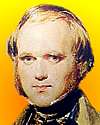
One letter stands out from the several thousand written by Charles Darwin in his lifetime. The letter, dated 5 Sep 1957, written from his home at Down, and sent to Asa Gray, contains his outline “on the means by which nature makes her species.” Darwin was aged 48 when he wrote this letter to the renowned botanist at Harvard University in the United States. With this letter, Darwin foreshadowed the publication of his great book, On the Origin of Species. The letter also fixed the date which established the priority of Charles Darwin for his great discovery. Of all of the letters written by Charles Darwin, the letter, dated 5 Sep 1957, is the most important one you should read.

On 5 Sep 1906, Ludwig Eduard Boltzmann died, the Austrian physicist who founded statistical mechanics. He held a firm belief in atomism (that all matter is made of atoms) and defended it against hostile opposition to this new idea. His struggle was a turning point in the history of the modern world. Today's book pick is: Boltzmanns Atom: The Great Debate That Launched A Revolution In Physics, by David Lindley who tells the story of this crucial scientific struggle over the existence of the atom during the second half of the 19th century. Boltzman had profound insights primarily into the physical nature of heat, gas and matter. Boltzman's brilliant insights brought about the golden age of physics that we continue to live in today. In 1850 no university taught such a subject as theoretical physics, but by 1900 it was a fully fledged discipline with whole institutes devoted to it. As the author shows, this burgeoning scientific movement led within just a few years to the discovery of quantum mechanics by Max Planck, radioactivity by Marie Curie, general relativity by Albert Einstein, the uncertainty principle by Werner Heisenberg, and more recently quantum electodynamics by Richard Feynman, the quark by Murray Gell-Mann, and even up-to-the minute developments in chaos and superstring theory. If you have read David Bodanis's E=mc², you will likely also enjoy this similar attempt to explain for laypeople the basis of modern physics.
It is available from Amazon, typically about New from $15.00. Used from $3.12. (As of earlier time of writing - subject to change.)
 | The most ordinary things are to philosophy a source of insoluble puzzles. In order to explain our perceptions it constructs the concept of matter and then finds matter quite useless either for itself having or for causing perceptions in a mind. With infinite ingenuity it constructs a concept of space or time and then finds it absolutely impossible that there be objects in this space or that processes occur during this time ... The source of this kind of logic lies in excessive confidence in the so-called laws of thought. |
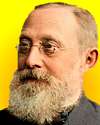 | Belief begins where science leaves off and ends where science begins. |
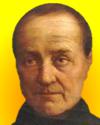 | Induction for deduction, with a view to construction. |
 | The body is a cell state in which every cell is a citizen. Disease is merely the conflict of the citizens of the state brought about by the action of external forces. (1858) |
| Before you look at today's web page, see if you can answer some of these questions about the events that happened on this day. Some of the names are very familiar. Others will likely stump you. Tickle your curiosity with these questions, then check your answers on today's web page. | |
| Births | |
 | Eugen Goldstein, born 5 Sep 1850, was a German physicist known for his work on electrical phenomena in gases and on cathode rays. He coined the term “cathode ray” (1876) emitted from a cathode. What other rays did he discover? |
 | On 5 Sep 1667, Girolamo Saccheri was born, an Italian mathematician who worked to prove a long-standing yet formerly unproven postulate, which can be stated as, “Through any point not on a given line, one and only one line can be drawn that is parallel to the given line.” Who originated (but didn't prove) the postulate? |
| Deaths | |
 | Ludwig Eduard Boltzmann (1844-1906) was a physicist who founded statistical mechanics. He also worked out a kinetic theory of gases, and the Stefan-Boltzmann law concerning a relationship between the temperature of a body and the radiation it emits. What was the cause of his death? |
 | On 5 Sep 1902, Rudolf Virchow died, a German pathologist and statesman who originated the concept that disease arises in the individual cells of a tissue and, with publication of his Cellular Pathology (1858), founded the science of cellular pathology. Virchow also worked on improving sanitary conditions in Berlin. He also helped develop yet another (unrelated) field of science in which he encouraged his friend Heinrich Schliemann. In what science did Virchow spend some time participating with Schliemann? |
| Events | |
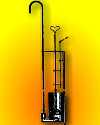 | On 5 Sep of a certain year, the first gasoline pump in the U.S. was sold to Jake Gumper, owner of a service station in Fort Wayne, Indiana, as invented and built by Sylvanus Bowser. What was the decade of this event? |
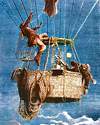 | On 5 Sep 1862, metereologist James Glaisher and his pilot Henry Tracey Coxwell made a balloon ascent to a record height. Its precise altitude is unknown because Glaisher lost consciousness and was unable to read the barometer. Death was narrowly avoided by the courageous efforts of the pilot. The height was estimated by extrapolating measurements already recorded on the ascent. To what estimated height in the atmosphere did these men rise in 1862? |
Fast answers for the previous newsletter for September 4: a type of virus that infects bacteria, rather than ordinary cells • submarine • ice • 1,600,000 to 10,000 years ago • Harry Truman • decade of 1882.
 If you enjoy this newsletter, the website, or wish to offer encouragement or ideas, please send feedback by using your mail reader Reply button.
If you enjoy this newsletter, the website, or wish to offer encouragement or ideas, please send feedback by using your mail reader Reply button. Your click on a Facebook, StumbleUpon, or other social button on the site webpages is also a welcome sign of appreciation. Thank you for using them.
© This newsletter is copyright 2020 by todayinsci.com. Please respect the Webmaster's wishes and do not put copies online of the Newsletter — or any Today in Science History webpage. (If you already have done so, please remove them. Thank you.) Offline use in education is encouraged such as a printout on a bulletin board, or projected for classroom viewing. Online, descriptive links to our pages are welcomed, as these will provide a reader with the most recent revisions, additions and/or corrections of a webpage. For any other copyright questions, please contact the Webmaster by using your mail reader Reply button.
--
If you do not want to receive any more newsletters, Unsubscribe
To update your preferences and to unsubscribe visit this link
Executive Real Estate Business Class
-
"It was like a man with wings. It wasn't like anything you'd see on TV or in a monster movie." ...
About the publisher
Search This Blog
Blog Archive
-
▼
2021
(585)
-
▼
September
(95)
- 800-Year-Old Tomb Discovered in Peru
- 600-Year-Old Muisca Jars Recovered in Colombia
- Human Footprints in North America Dated to 23,000 ...
- September Quiz
- Gas pipe workers find 800-year-old burial bundles
- Gas pipe workers find 800-year-old burial bundles
- Dark Destiny!
- Long-Distance Trade Detected in Genomes of Siberia...
- Composition of Stone Tools From Roman Morocco Anal...
- New Thoughts on Maya Pyramid in El Salvador
- This Civil War–Era Eagle Sculpture Was Made Out of...
- Roman gold coins found off coast of Spain
- Roman gold coins found off coast of Spain
- Review of The Bombay Prince by Sujata Massey, a my...
- DNA Analysis Identifies Japanese Ancestors
- Ritual Objects Discovered in Northern Egypt
- 'Band of Brothers' Stars Reflect on the Epic Minis...
- ‘Cake mummy’ survived WWII bombing of Lübeck
- ‘Cake mummy’ survived WWII bombing of Lübeck
- Am I my heroines?
- Medieval Mass Graves Excavated in Lebanon
- Three Phases of Wooden Wagon Way Uncovered in Scot...
- Rare Shell Artifacts Discovered in South Australia
- Burned Layer at Jamestown Linked to Bacon’s Rebellion
- Burned Layer at Jamestown Linked to Bacon’s Rebellion
- Painted 14th c. burial vaults found in Bruges
- Painted 14th c. burial vaults found in Bruges
- Possible Grave of Medieval Christian Hermit Excava...
- My notebook and I got drenched and my story was bo...
- Woman buried with heavy bronze jewelry found in in...
- Woman buried with heavy bronze jewelry found in in...
- Birthdays in History
- Teaching "All Men are Created Equal" (Part II)
- Psychologically Speaking, Who Were the Heads of th...
- Christmas Roses
- For Constitution Day, Let's Toast the Losers of th...
- We are All Becoming Cassandras: Leaders Must Heed ...
- Inequality Tends to Reach Political Tipping Points...
- The Roundup Top Ten for September 17, 2021
- Memo From Irish History: Welcome to Your Future, A...
- Rediscovered early drawing by Van Gogh on display
- Rediscovered early drawing by Van Gogh on display
- Hispano-Visigothic grave found at Spain cave hermi...
- Hispano-Visigothic grave found at Spain cave hermi...
- Searching for the Fisher Kings
- Bone Tools in Morocco May Be Earliest Evidence of ...
- Did Eurasia’s Early Bronze Age Pastoralists Drink ...
- The Trousseau
- Wood lion head recovered from Finnish shipwreck
- Wood lion head recovered from Finnish shipwreck
- The Floating Book by Michelle Lovric, a sensual no...
- Sculpture of Lord Ganesha Uncovered in Southeaster...
- Saudi Arabia’s Rock-Cut Camels Redated
- Possible Parietal Art Discovered on the Tibetan Pl...
- Renaissance shield looted by Nazis returned to Cze...
- Renaissance shield looted by Nazis returned to Cze...
- Anglo-Saxon Silver Brooch Recovered in England
- Roman Sewer System Discovered in Turkey
- Face of “Dutch Neanderthal” Reconstructed
- Gupta-Period Temple Found in Northern India
- The Polynesian 'Prince' Who Took 18th-Century Engl...
- When George Washington Took a Road Trip to Unify t...
- On 9/11, a Flotilla of Ferries, Yachts and Tugboat...
- Southern Tomb in Djoser funerary complex opened
- Southern Tomb in Djoser funerary complex opened
- Ask A Wench — What We've Been Watching
- Possible Prehistoric Campsite Uncovered in Norther...
- Statue of Roman Emperor Hadrian Unearthed in Turkey
- When George Washington Took a Road Trip to Unify t...
- Byzantine-era axe, machete found in ancient city
- Byzantine-era axe, machete found in ancient city
- Early Hollywood is a family affair in The Limits o...
- Maya rulers installed in Met’s Great Hall
- An Interview with Susanna Kearsley
- ENTER THE HEART OF DARKNESS | Legend of the Supers...
- ENTER THE HEART OF DARKNESS | Legend of the Supers...
- The Disturbing Case of Xavier Dupont de Ligonnès
- Newsletter for Sunday 12 September.
- Newsletter for Saturday 11 September.
- ‘Rise and Fall: The World Trade Center’ Premieres ...
- Newsletter for Friday 10 September.
- Newsletter for Thursday 9 September.
- Newsletter for Wednesday 8 September.
- Holiday savings - extended!
- Support Black-Owned Businesses: 181 Places to Star...
- Newsletter for Tuesday 7 September.
- Holiday savings for the whole family!
- Newsletter for Monday 6 September.
- Three All-New 9/11 Documentaries
- Newsletter for Sunday 5 September.
- Newsletter for Saturday 4 September.
- Labor Day Sale at the History Store
- Newsletter for Friday 3 September.
- Newsletter for Thursday 2 September.
- Newsletter for Wednesday 1 September.
-
▼
September
(95)
-
Blogroll
-
About
HistoryFact










0 comments:
Post a Comment